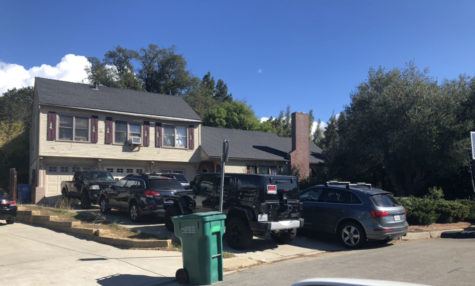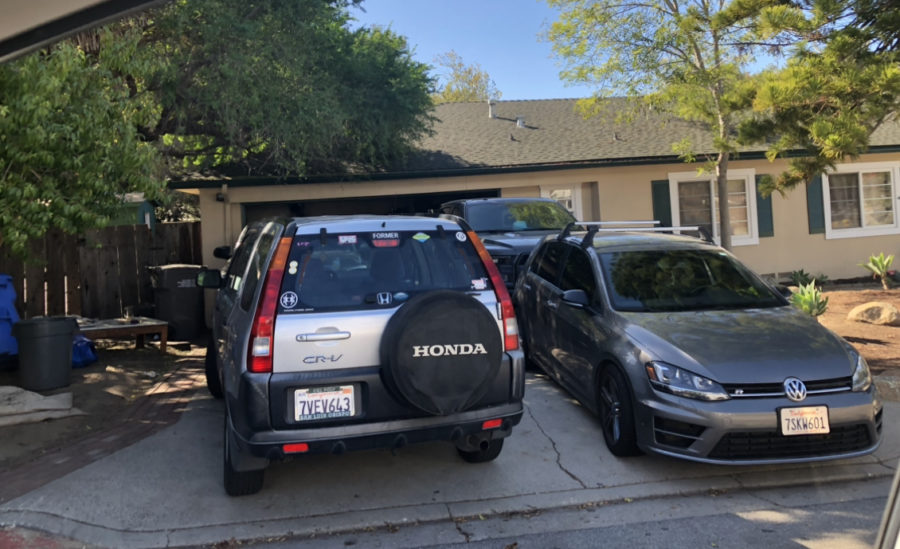Cal Poly Students Invade SLO’s Long Time Residential Areas
California Polytechnic University was established in San Luis Obispo (SLO) on March 8, 1901. Since its establishment, SLO has adapted to its role as a college town catering its attractions to college students, including a multitude of late-night coffee shops, and bars.
SLO is not a sprawling town, when more people move into it, it urbanizes from the inside out. This has led to the growing amount of Cal Poly students now moving into more residential areas of SLO.
Scott Watkins, a longtime resident of SLO, has watched the recent growth of Cal Poly as well as the overflow of students into residential areas of SLO.
“There are more and more students every year that can’t find housing, you know, on campus, and so they moved all the way I live over by Los Osos Valley Road, and I’m about as far from school as you can get,” Watkins said. Showing just how far the students have spread from the school.
The unbalanced ratio of students to housing has been worsened by Cal Poly‘s increase in students in the last couple of years. Just in the last year, they have had an increase of incoming students by 13 percent.
“There’s just more, you know, the president of the university when he first took over a couple of years ago said, ‘we need 4500 more students,’ It just made us all cringe. Where are they going to live? It’s not a huge town,” Watkins said. Many residents of SLO’s biggest nightmare coming true; the invasion of college students.
“People are buying houses just as investments. They don’t ever intend to live in them. if they can’t do it on their own, they’ll get five people together and, you know, buy a house and rent it and it’s like a business,” Watkins said. This idea has recently become popular in SLO due to the influx of college students looking for housing. Watkins tries to accept the circumstance and make peace with his neighbors.

He believes that the solution is to find a middle ground with the students. He understands that both parties are in very different stages of their lives and that SLO citizens have a responsibility for not stereotyping the college lifestyle, yet his neighbors make it hard by fitting the stereotype so perfectly.
“There’s a lot of cars. They don’t really take care of the yard. And they can have late-night parties. Over the years the party thing has finally gotten so bad that the city started making laws and fines that we’re at least alleviating the problem, as it was. It’s not as bad as it used to be.” Still, with the laws in place, Watkins has had some less-than-neighborly experiences.
“There’s still maybe four rentals in the neighborhood. Only one is close enough to have been a problem over the last number of years. And it’s not right now. That’s the other thing you know because there’ll be kids in there that are great, super quiet, and then they graduate and move on and new brats move in,” Watkins said.
“Well, the rental closest to us in the garage had a standalone garage, and the kids had amps and guitars and drums. It was a full-on band, and they would play, they knew they had to stop at 10 o’clock at night,” Watkins said, “That’s when you can call the cops if it’s after 10 but they would play from eight to 10 you know throughout the week, and they were horrible musicians. They were like learning, it was just awful. The drum beat and bass notes on a bass guitar would go right through the walls. You couldn’t shut it out.”
Unfortunately, the SLO police department’s priorities don’t match those of citizens with noisy neighbors.
“Yes, I’ve called the police. They’re pretty slow to react. I guess calling the police would be my last effort,” Watkins said. He has taken most confrontations with his neighbors into his own hands, only using the police as last resort.

“When I opened the door [My neighbor] looked at me, like, ‘what’s wrong with you?’ And I said, ‘you know, you’re gonna graduate from school, you’re gonna get a job. You’re gonna have a family and buy a house and you’re gonna be just like me,’” Watkins said.
With no end in sight, Watkins encourages developing mutual respect from both parties, learning how to coexist, and accepting that SLO is a college town and students and citizens are bound to intermix.
Pema Secrest is an incredibly average human being and wannabe writer. She is a sophomore at Arroyo Grande Highschool and is ready to leave. ...











